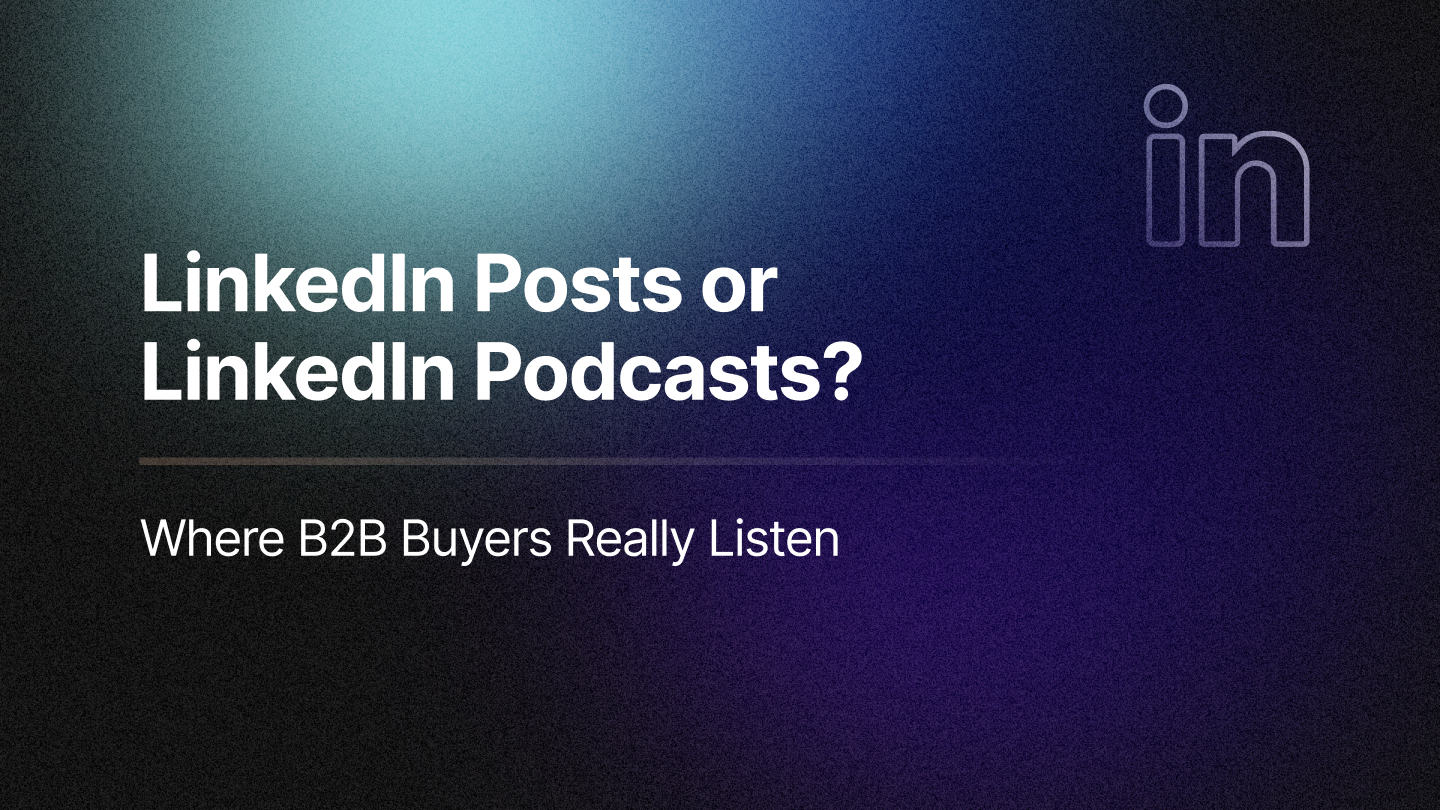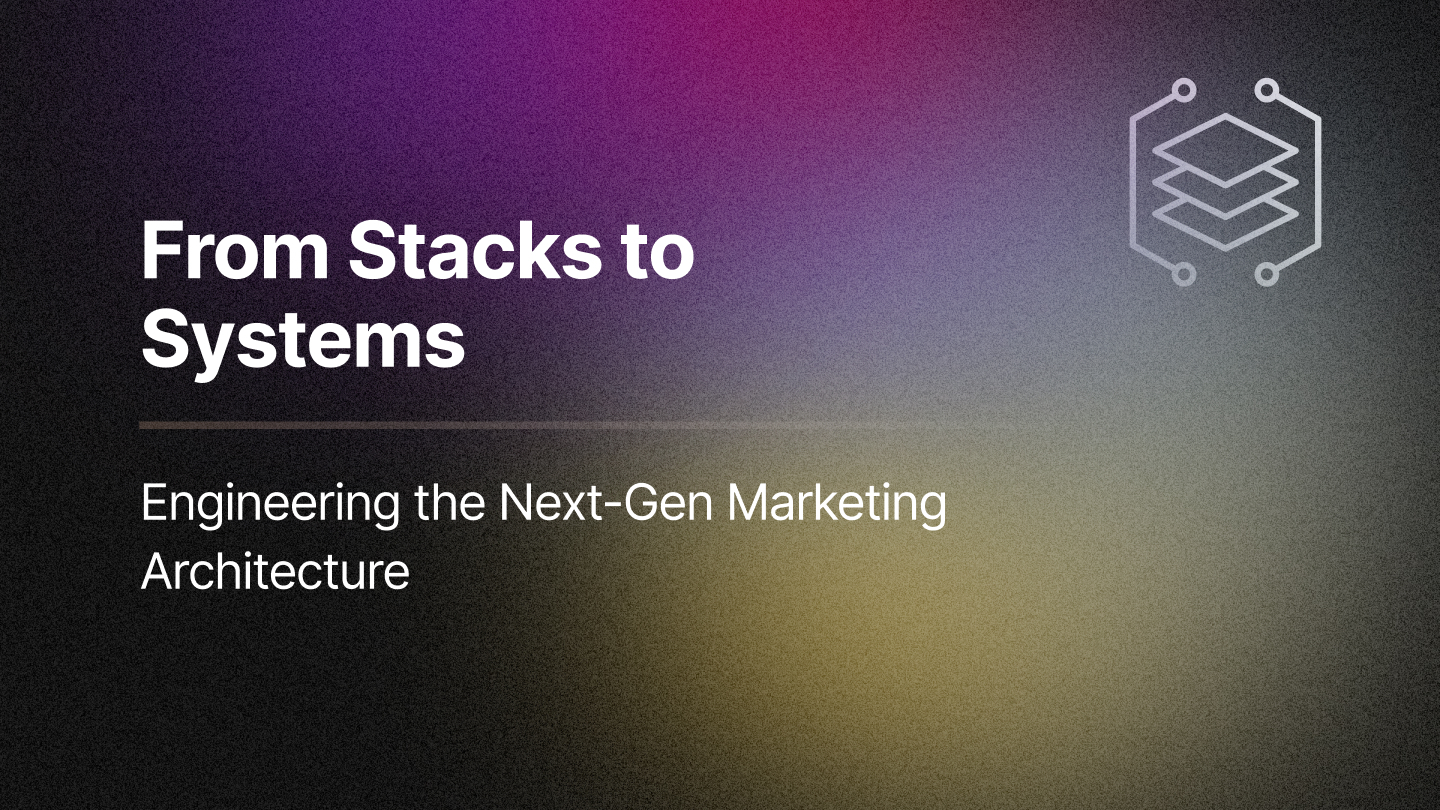In B2B marketing and the world of go-to-market (GTM) strategies, the landscape is constantly evolving. As marketers and strategists, we often find ourselves caught in debates over which approach is superior. However, this fixation on choosing sides can be limiting. Instead of adhering rigidly to one ideology, we should embrace the flexibility of integrating multiple strategies to suit our unique business needs. Let's explore some of the common debates in B2B marketing and why a more integrative approach can lead to success.
Examples of Ideological Debates in B2B Marketing
1. ABM vs. Lead-Based Motion
Account-based marketing (ABM) focuses on targeting specific accounts, while Lead-Based Motion prioritizes individual leads. Each approach has its advantages. ABM allows for personalized marketing strategies aimed at high-value accounts, enhancing engagement and conversion rates. Conversely, Lead-Based Motion enables broad outreach, capturing a wider audience and nurturing potential leads through the funnel. Instead of choosing one over the other, consider a hybrid approach that targets key accounts while maintaining a pipeline of leads to ensure comprehensive market coverage.
Stat: According to Gartner, 70% of marketers are adopting an account-based marketing approach to improve their targeting and engagement with high-value accounts, underscoring the effectiveness of personalized strategies in B2B marketing.
Counter Stat: However, Forrester indicates that only 36% of companies using ABM have seen a significant impact on their pipeline, highlighting that effective execution and integration with lead-based tactics are necessary to maximize success.
2. MQA vs. MQL
Marketing Qualified Accounts (MQA) and Marketing Qualified Leads (MQL) are metrics used to assess the readiness of prospects for sales engagement. MQLs focus on individual leads, while MQAs evaluate entire accounts. MQAs provide a more holistic view by considering multiple touchpoints within an account, making it easier to prioritize sales efforts. However, MQLs remain valuable for nurturing individual prospects. Balancing both metrics can offer deeper insights into your audience and optimize your marketing strategy.
Stat: Forrester research indicates that companies adopting an MQA approach have seen a 25% increase in sales efficiency by focusing on account-level engagement rather than individual leads.
Counter Stat: Conversely, Gartner reports that companies focusing solely on MQAs sometimes experience a 20% decrease in lead volume, as the broader pool of individual leads is not captured, demonstrating the need to balance both MQA and MQL strategies.
3. PLG vs. Sales-Led
Product-Led Growth (PLG) emphasizes the product as the main driver of customer acquisition and retention, whereas Sales-Led strategies rely on a dedicated sales team to drive growth. PLG can lead to faster adoption rates and lower customer acquisition costs, especially for SaaS companies with freemium models. However, complex B2B solutions may require a sales-led approach to build relationships and close deals. Integrating PLG elements into a sales-led strategy can create a more efficient and effective growth model.
Stat: Gartner predicts that by 2025, 75% of software and SaaS providers will adopt product-led growth strategies, highlighting the shift toward leveraging products as key drivers of business growth.
Counter Stat: On the other hand, Forrester finds that 60% of B2B buyers still prefer a human-led sales interaction for complex purchases, indicating the ongoing relevance of traditional sales-led approaches in certain markets.
4. Marketing Mix vs. Multi-Touch Attribution
Marketing Mix focuses on optimizing the allocation of resources across various marketing channels, while Multi-Touch Attribution analyzes how different touchpoints contribute to conversions. Marketing Mix helps in strategic planning, while Multi-Touch Attribution provides granular insights into customer journeys. Combining both approaches allows marketers to make informed decisions on budget allocation and optimize the entire customer experience.
Stat: According to Forrester, companies that effectively integrate marketing mix modeling with multi-touch attribution see a 20% improvement in marketing ROI by optimizing channel investments based on comprehensive insights.
Counter Stat: However, Gartner points out that over-reliance on multi-touch attribution can lead to a 15% increase in analysis paralysis, where too much data overwhelms decision-making processes, underscoring the need for a balanced approach.
5. Digital vs. Events
Digital marketing offers scalability and precise targeting, while in-person events facilitate personal connections and relationship-building. The COVID-19 pandemic accelerated the shift towards digital, but as we return to in-person interactions, the value of events is being rediscovered. A blended strategy that leverages digital reach and events for engagement can enhance brand presence and customer loyalty.
Stat: Gartner reports that 40% of B2B marketers plan to increase their investment in hybrid event strategies, combining digital and in-person elements to maximize engagement and ROI.
Counter Stat: However, Forrester research indicates that 35% of marketers feel hybrid events complicate logistics and tracking, suggesting a need for improved tools and strategies to balance digital and physical event management effectively.
6. Inbound vs. Outbound
Inbound marketing attracts customers through valuable content and organic engagement, whereas outbound marketing involves proactive outreach to potential customers. Inbound marketing is cost-effective and builds trust, while outbound marketing offers immediate results and wider reach. A balanced approach that uses inbound to nurture long-term relationships and outbound to generate quick leads can maximize impact.
Stat: Forrester research shows that companies using a balanced approach of inbound and outbound marketing achieve 27% higher revenue growth than those focusing on a single strategy.
Counter Stat: Conversely, Gartner highlights that 28% of companies focusing heavily on outbound strategies report higher lead acquisition costs, demonstrating the importance of integrating inbound efforts to optimize spending and lead quality.
7. Direct vs. Channel
Direct sales involve selling directly to customers, while channel sales leverage third-party partners to reach the market. Direct sales offer control and higher margins, whereas channel sales provide broader distribution and access to new markets. Combining direct and channel strategies can optimize market penetration and drive growth.
Stat: Gartner suggests that 50% of B2B sales will come from indirect channels by 2025, emphasizing the importance of integrating direct and channel sales strategies.
Counter Stat: Forrester, however, notes that 40% of companies relying too heavily on channel partners have experienced brand dilution issues, indicating the need to maintain strong direct customer relationships alongside channel strategies.
Embracing Flexibility and Integration
These statistics and insights from Gartner and Forrester highlight the importance of adopting a flexible approach in B2B marketing, enabling marketers to navigate the complexities of modern strategies effectively.
Different tactics might work for different stages, regions, segments, and decisions. Instead of being ideological, leverage the best aspects of all strategies and tactics to align with your GTM goals. This approach allows for adaptability in a constantly changing market environment. By integrating multiple strategies, businesses can optimize their marketing efforts, improve customer experiences, and achieve sustainable growth.
Success Comes from Adaptability
Success in B2B marketing and GTM strategies comes from adaptability and integration, not rigid adherence to one method. By embracing flexibility, businesses can respond to market changes, meet diverse customer needs, and stay ahead of the competition. This holistic approach ensures that marketing and sales efforts are aligned with overall business objectives, driving greater efficiency and effectiveness.
Conclusion
In the complex world of B2B marketing, it's essential to challenge the ideologies that constrain our thinking. By embracing a flexible and integrative approach, we can leverage the strengths of various strategies to achieve our goals. As the marketing landscape continues to evolve, the ability to adapt and integrate will be key to sustained success.
What’s your take on this? Would love to hear your thoughts on how you integrate different strategies in your B2B marketing efforts!
Related Blogs








